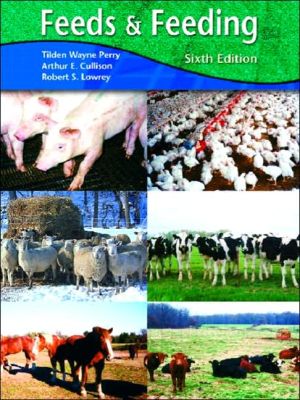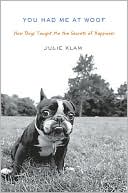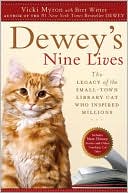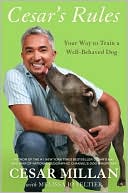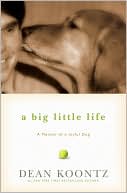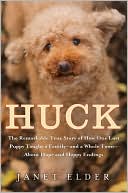Feeds and Feeding
Now in its sixth edition, Feeds and Feeding continues to reflect the latest trends in the livestock feed industry, including a new chapter on carbohydrate and lipid energy nutrition. Highly acclaimed for its usability and versatility as a general reference to animal nutrition, this edition maintains the accolades awarded Feeds and Feeding when it was first published over 27 years ago.
Search in google:
This contemporary and authoritative survey provides comprehensive coverage of the nutritional and scientific feeding of beef cattle, dairy cattle, poultry, horses, sheep and swine, and offers a detailed treatment of feed composition for use in ration formulation.Topics covered include principles of animal nutrition and physiology, feed stuffs, and livestock and poultry feeding.For those in Animal Nutrition fields. Booknews Serving as both a reference and a text book, this volume reflects current trends in the livestock feed industry and presents general information on animal nutrition. Particular attention is given to animal physiology, feedstuffs, balancing rations, and livestock and poultry feeding. Appendices include tables on nutrient requirements and a glossary. The authors are professors of animal nutrition and animal science associated with Purdue University and the University of Georgia. Annotation c. Book News, Inc., Portland, OR
Feeds and Feeding, sixth edition, has been prepared by the senior author in order to keep current the text that was first written by Dr. Arthur E. Cullison and published in 1975. Following the traditional design and intent of Dr. Cullison—and also Dr. Robert S. Lowrey in the fourth edition—the current revision has been prepared as a text for an undergraduate course in animal nutrition and feeding. Therefore, only information pertinent to such a course has been included. While this book answers most basic questions pertaining to animal feeding and nutrition, it does not deal with more unusual feeds and is not intended as an all-purpose reference on such matters.\ The overall importance of poultry meat—especially broiler chicken and turkeys—as a source of human food has increased very rapidly, whereas that from cattle, pork, sheep, and veal has tended to either remain fairly constant or decline. Charts have been prepared to demonstrate changes in consumption of animal poultry meat per person in the United States between 1960 and 2002, and are presented in connection with the subject matter relevant to each of the species. Starting with the fifth edition, sections on the nutrition of laying hens, and chicks for the production of broiler meat were included, thus changing the format of the original four editions.\ This sixth edition, following the tradition of the first five editions, is not meant as a review of original research literature. Most complete literature citations are found in the National Research Council (NRC) bulletins covering each of the species of animals for which nutrition and feeding programs have been included. Since each of the NRC bulletins has been prepared by a committee of outstanding researchers and teachers, such bulletins have served as the ultimate authority in preparing nutrient and feed recommendations presented in this book. However, there are several other textbooks that contain excellent reviews of literature that deserve to be perused when the student wishes to go into greater depth on a subject. Although the last edition of Morrison's Feeds and Feeding was published nearly 40 years ago, it still has a great deal of pertinent information that was useful to the senior author in preparing the sixth edition. Feeds and Nutrition, by Ensminger, Oldfield, and Heinemann, containing more than 1,500 pages, is probably one of the most nearly complete books on the subject. In addition, more basic nutrition books such as Maynard's Animal Nutrition might be helpful references.\ The sixth edition provides the latest information available on feed composition for use in ration formulation. However, because NRC bulletins set up nutrient requirements quite differently for monogastric and ruminant animals—and even for species within a category—it is necessary to provide two sets of feed tables: one for the ruminant animals and one for the monogastric animals. Naturally, this necessitates additional pages in the text but such changes also become necessary as research findings and changes in types of animals develop. Such feed tables have been developed from those presented in the respective NRC bulletins. The student should be made aware that different species committees may differ in which feed table data are presented. In other words, the fact that some feed data are presented on a 100% dry matter basis, whereas other feed data are presented on an air-dry basis, is a reflection of the species committee preparing that bulletin. Either method of calculating formulations is equally effective as long as the student takes any such effects into account.\ The authors wish to express appreciation to the National Academy of Sciences for permission to use data that have been generated by the respective species committees and presented in the respective species bulletins. The following National Research Council bulletins from the NAS are cited in this sixth edition:\ Nutrient Requirements of Beef Cattle, seventh rev. ed., 1996\ Nutrient Requirements of Dairy Cattle, sixth rev. ed., 1989, and seventh rev. ed., 2001\ Nutrient Requirements of Horses, fifth rev. ed., 1989\ Nutrient Requirements of Poultry, ninth rev. ed., 1994\ Nutrient Requirements of Sheep, sixth rev. ed., 1985\ Nutrient Requirements of Swine, tenth rev. ed., 1998\ The publishers send out their texts for peer review from time to time. As one reviewer stated, "I have used various editions of this text over the past 20 years because of its content. I think it has about the right amount and balance of information . . ."
PrefaceIntroduction1The Feed Nutrients2General Functions of Feed Nutrients3Proximate Analysis of Feedstuffs4Use of the Van Soest Analysis in Feed Evaluation5The Digestive Tract6Nutrient Digestion, Absorption, and Transport7Apparent Digestibility8Total Digestible Nutrients (TDN)9Energy Utilization10Study Questions and Problems11Energy Nutrition: I Carbohydrates, II Lipids12Protein Nutrition13Mineral Nutrition - General14The Macrominerals15The Microminerals16General Recommendations for Mineral Feeding17Vitamin Nutrition18Physiological Phases of Livestock Production19Study Questions and Problems20Feeds and Feed Groups - General21Energy Feeds22High-Protein Feeds23Air-Dry Roughages24The Molasses25High-Moisture Feeds26Identifying Feeds from Their Composition27Hay and Hay Making28Silage and Haylage - Production and Use29Problems of Feed Storage30Processing Feeds31Uniform State Feed Bill32Pastures - General33Facts About Important Pasture Crops34General Uses of Pasture in Livestock Feeding35Study Questions and Problems36Balancing Rations - General37Calculating a Balanced Ration - General38Balancing a Ration for a Growing and Finishing Steer39Balancing a Ration for a Steer Using a High Level of Roughage40The California System for the Net Energy Evaluation of Rations for Growing-Finishing Cattle41Balancing a Ration for a Dairy Cow42Balancing Rations for Horses43Balancing Rations for Sheep44Balancing Rations for Swine45Formulating a Feed Mixture Based on a Balanced Daily Ration or a Portion Thereof46Formulating Feed Mixtures by the Use of the Square Method47Use of Algebraic Equations in the Formulation of Feed Mixtures48Use of the Square Method for Formulating a Balanced Ration Mixture for a Finishing Steer49Formulation of a Balanced Ration Mixture for Lactating Sows50Calculating and Altering Levels of Nutrients in Feed Mixtures51Formulating and Using Premixes52Computerized Least-Cost Rations53Estimating Feed Requirements54Weights, Measures, Volumes, and Capacities55Feeding Beef Cattle56Feeding Dairy Cattle57Veal Production58Feeding Horses59Feeding Chickens60Feeding Turkeys61Feeding Sheep62Feeding Swine63Use of Performance Modifiers64Feeding Animal Wastes and Snackfood By-products65Aflatoxin in Feeds66Study Questions and ProblemsApp. A: Tables on Nutrient RequirementsApp. BGlossary of Terms Frequently Used in Discussing Matters Related to Feeds and FeedingIndex
\ Serving as both a reference and a text book, this volume reflects current trends in the livestock feed industry and presents general information on animal nutrition. Particular attention is given to animal physiology, feedstuffs, balancing rations, and livestock and poultry feeding. Appendices include tables on nutrient requirements and a glossary. The authors are professors of animal nutrition and animal science associated with Purdue University and the University of Georgia. Annotation c. Book News, Inc., Portland, OR\ \ \ \ \ BooknewsA textbook for an undergraduate course in the nutrition and feeding of commercial livestock, focusing on basic information rather than the more unusual topics and feeds. Does not aspire to be a general reference or a guide to the primary literature. Includes specific data for beef and dairy cattle, horses, poultry, sheep, and swine. Updated from the 1987 edition to incorporate new findings and recommendations, particularly from the National Research Council Bulletins, including the new distinction between ruminant and monogastric animals. Also reflects the increased importance of poultry meats. First published in 1975. Includes a glossary without pronunciation. Annotation c. by Book News, Inc., Portland, Or.\ \
